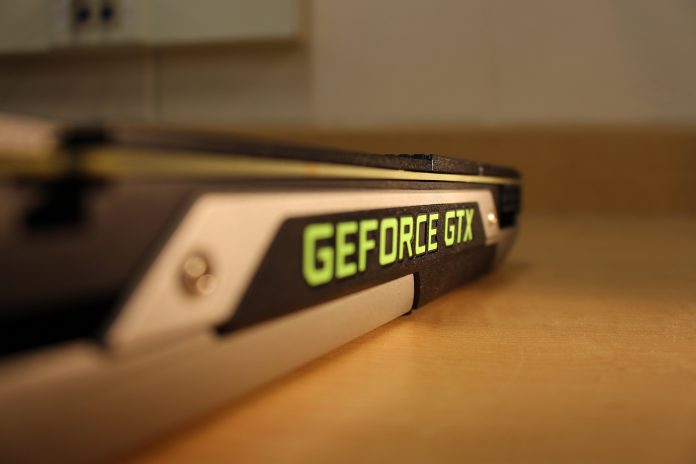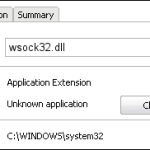Gaming has evolved over the years quite a bit. It used to be more straightforward, you bought a game and your pc would be able to run it without any issues. However, this was way back in the ‘90s where operating systems were still in their infancy stage and most compatible programs would run well on most PCs. Now things are different, we must select different components to create our own tower that makes the bulk of our computer, and we also have to take into consideration what we want from it before we buy it.
The podium
When it comes to the best gaming experience the first thing we need to take into consideration is our GPU unit. The graphics unit is the PC’s main heavy lifter that allows for stable fps (frames per second) and overall better in-game graphics customization. The following 2 GPUs that we recommend are both amazing in their own right and can manage to run most new games without much issue. Here are 3 of the best models for each graphics card. Expect a comparison between the best of both worlds at the end.
GTX 970
The GTX 970 is a relatively older model of GPU, having been released in late 2014, however, it can still stand up to today’s standards and demands. Let’s look at the first model of GTX 970 on our entry list:
EVGA GeForce GTX 970
The EVGA GeForce GTX 970 4 GB comes with redesigned dual fans made to improve cooling performance of up to 25% compared to its predecessors. The fans (ACX 2.0 cooling unit) are made of aluminium, with 3 copper heat pipes that come into contact with the GPU core. The graphics unit comes equipped with 1 display port, 1 HDMI 2.0 connector as well as 1 DVI-I and 1 DVI-D. In terms of power requirement, you need two 6-pin power connectors and a minimum of 550 watts on your power supply for the whole system.
This video card utilizes the PCI express 3.0 interface with the following specs: 1664 Cuda Cores, 1165 MHz base clock (which boosts up to 1317 MHz), 224.3 GB/s memory bandwidth and 4 GB of GDDR 5. Running on the Maxwell architecture it guarantees low power consumption, only 145 Watts.
The EVGA GeForce GTX has introduced a new feature, namely the dBI-dB inverter, which is essentially a sort of a passive cooling system. This is also incorporated into the Bios, considering it features a dual Bios switch that permits manual switch from the dBi Bios tp the secondary Bios and vice versa.
Overall the graphics card delivers what was promised, by having enhanced cooling systems and being able to deliver steady fps to resource demanding games such as Battlefield 4, Bioshock Infinite or FarCry 4 at ultra settings.
MSI GAMING GeForce GTX 970 4GB GDDR 5
Aside from MSI’s design of black and red that has become iconic for the over the years, this particular gaming graphic’s unit lives up to its set expectations. It features a base clock of 1114 MHz (1253 MHz boost), making it up to 4% faster than its reference counterpart. The emphasis is visible with this card, considering it also comes with a gaming app specifically designed to customize your screen and have easy access to overclocking. The card supports Microsoft DirectX 12, adaptive V-sync as well as up to 4 simultaneous displays. However, all of this taxes your power supply, requiring a minimum of 500 Watt to run.
The MSI Gaming 970 comes with the Twin Frozr 5 cooling solution using dual Torx fans, with dispersion blades generating less noise and keeping its components cooler while gaming(up to 10 degrees Celsius cooler). It also incorporates a Zero Frozr Feature that allows for stopping fans from spinning altogether when doing minimal work on pc to avoid loudness.
Size wise the graphics card is not at all shy, measuring 268mm long by 141mm tall and 35mm thick. It also comes with a 6-8 PCI power cable and a DVI to VGA adapter. It also has 4 display copper heat pipes (2 of them of 8 mm and 2 of 6 mm) for better heat dissipation.
Performance wise it can play newer games such as Rise of the Tomb Raider, or even Assassin’s Creed Origins, which are quite demanding in terms of resources.
Zotac Nvidia GTX 970 4 GB GDDR 5
As with all GTX 970 counterparts, the Zotac version offers all that you’ve been accustomed to such as NVIDIA GameWorks tech, GPU boost 2.0, G-sync, super-resolution, and more (especially in the cooling department). It is also much more compact than other GPUs, making it perfect for many PC builds with less available spacing.
The cooling system is comprised of a dual 90 mm shrouded fan design. It is a triple slot cooler with very good space management in the form of thicker fans with better static pressure resulting in one of the quietest graphics card available. The Extreme version of Zotac’s GTX 970 comes with 3 coolers and bigger heat sink pipes for optimal heat dispersion, however, the size vastly increases. But it is nice to know that the manufacturer gives you options from which to select according to your taste.
In terms of benchmark, the GPU can run smoothly up until 4k is tested, and with which it doesn’t do so well. However, it can play ay 1080p games such as Bioshock Infinite, Crisis 3, Watch Dogs, etc.
Overall it is a great choice for those who can’t afford one of the new GTX models, with no real sacrifice in quality for what you pay.
GTX 1060
Ok now let’s delve into the newer GTX models, namely the GTX 1060, starting with EVGA.
EVGA GTX 1060 6GB
The GTX 1060 is supported by the Pascal 106 GPU processor graphics unit which is built on 16 nanometers Pascal architecture with 4.4 billion transistors. In terms of specs, we have 1280 Cuda Cores (single precision) with a base clock speed of 1607 MHz and boosted at 1835 MHz. It comes equipped with 3 display ports, 1 HDMI 2.0 and 1 dual-link DVI.
Overclocking can be done with EVGA’s Precision X utility which results in a 95 MHz GPU clock offset. Meaning that even though as stated clock speed is set at 1835 boosted, with the X utility we can get a max of 2100 MHz ( 2050 stable). Temperatures are reasonable for a small cooler reaching 79 Celsius at full load.
As expected from EVGA, fan noise is very limited, especially when light gaming at 45% speed, you can barely hear it. In terms of benchmark, it can smoothly run games such as Ashes of the Singularity at stable 45 fps, Crisis 3 max settings average of 55 fps, and can completely max out games like Overwatch or Metro: Last Light.
Overall the GPU runs very well without being bottlenecked by its single fan, makes little noise during usage and can max out certain games completely thanks to its 6 GB. Definitely a worthwhile investment of your hard earned cash.
Gigabyte Geforce GTX 1060 Windforce 6GB
The Windforce 1060 comes equipped with two 90 mm fans that spin bi-directionally. Also on the fans, we can notice rigid lines that NVIDIA claims to increase airflow up to 23%, meaning an increase in efficiency because they can dissipate more heat.
On the back of the card, we have a 6 pin power connector, standard HDMI 2.0 port, DVD-I, etc. A medium sized copper heat pipe that transfers generated heat from the GPU unit to the heat sinks and out can be found at the back of the card.
While this particular GPU does support 4k gaming, it is best to settle for enjoying games on a full 1080p monitor, due to the fact that it represents a much more enjoyable experience. However, it’s nice to know we have the option for doing so.
In terms of benchmarking, the Gigabyte Geforce GTX 160 constantly holds a steady fps at high resolution and settings in even modern games such as Assassin’s Creed Odyssey, Call of Duty Black Ops 4 and Rise of the Tomb Raider. It is a very stable GPU unit that can handle most games.
MSI GeForce GTX 1060 6GB
As per tradition, MSI comes with its iconic red and black design and the MSI dragon placed on the back of the card, where it features the usual collection of video outputs. The MSI app gives you access to three-speed modes, namely the silent mode (1506 MHz, 1708 MHz boosted), gaming mode (1569 MHz, 1784 MHz boosted) and overclocked mode (1594 MHz, 1809 MHz boosted).
The best thing to do is select overclocked mode and leave it like that because of the Twin Frozr 6 cooler comes equipped with a fan stop mode which only enables the fans when needed. Also, the cooler does a great job at … well cooling the GPU even in overclocked mode and did not require more than 60% of its power to do so. Temperatures never rise above 65 degrees Celsius and fans remain quite silent even when gaming.
In terms of benchmark, it can stand its ground even when playing games that the 1080 GPU would have problems maxing out, such as Watch Dogs 2. In can score stable 60 fps in Forza Horizon 3, and even Mafia 3.
GTX 970 vs GTX 1060
In our honest opinion, the MSI version seems to be the best for both the GTX 970 as well as for the GTX 1060, so these are the two GPUs that we will compare.
In terms of raw power, it is pretty safe to say that the 1060 graphics card takes the cake. It comes as no surprise, considering that it has 2 extra GB. And this can be easily seen in benchmarks for multiple games. On average, the 1060 GPU has 8 more stable fps in-game when compared to the GTX 970, on both very high settings and on ultra settings. Compared games such as Witcher 3, Rise of the Tomb Raider, Hitman 2, Need for Speed Payback, PUGB all show more fps in favour of the 1060. With that in mind, it is important to remember that although lacking in a few fps, the GTX 970 is still a solid GPU in its own right, considering its age.
The fact that it is much cheaper nowadays that a 6 GB GPU allows for a great alternative for those who do not wish to spend over 220 dollars on a single PC component. As of right now, you can find GTX 970 at the price of 150 dollars or less, which is quite rewarding to be able to play video games at 75% of a 1060 experience with almost half its price.
Both graphics cards are amazing in their own right and it comes down to preference in the end. Are you a die-hard video game player who wishes to get the most out of his/her experience? Then the GTX 1060 6GB is for you. Are you a more casual gamer with a limited budget to spend on PC components? Then the GTX 970 4 GB is the perfect alternative for you. Whatever your choice may be, you cannot really go wrong with either GPUs, because they are both solid.
Last update on 2023-11-11 at 11:43 / Affiliate links / Images from Amazon Product Advertising API
















![[How To] Play Call of Duty Modern Warfare 2 Spec Ops LAN Online Using Tunngle How to Play Call of Duty Modern Warfare 2 Spec Ops LAN](https://mysteryblock.com/wp-content/uploads/2013/07/How-to-Modern-Warfare-150x150.jpg)







![[How To] Play Call of Duty Modern Warfare 2 Spec Ops LAN Online Using Tunngle How to Play Call of Duty Modern Warfare 2 Spec Ops LAN](https://mysteryblock.com/wp-content/uploads/2013/07/How-to-Modern-Warfare-100x70.jpg)